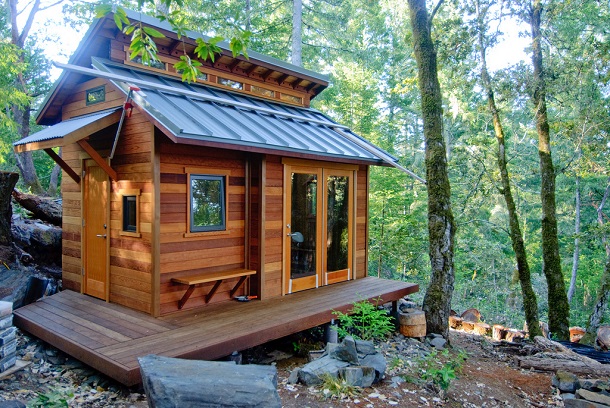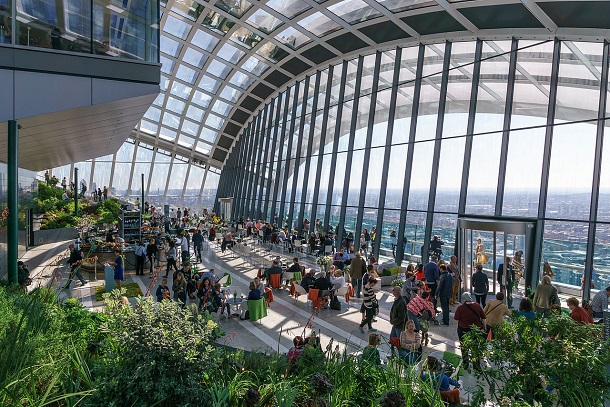Real Estate Disappears
 Futures come in many shapes and sizes. There are possible futures, probable futures, and preferred futures. Each of these comes with a different set of tools from the futurist's workshop.
Futures come in many shapes and sizes. There are possible futures, probable futures, and preferred futures. Each of these comes with a different set of tools from the futurist's workshop.
The thing is... there isn't just ONE future. We get to choose.
So, I found it difficult to give a straight answer when asked about the future of real estate earlier this month. Anyone who gives predictions won't last long as a futurist. Among the occupational hazards of this work includes the fact that any statement made about the future may, in hindsight, appear to be obvious, wrong, or worse yet, obviously wrong.
What we can talk about are trends and possibilities. And here are a few things that I'm seeing regarding the future(s) of where and how we live:
The Post-Consumer Generation
Millennials are absolutely terrified of buying houses, getting married, and having kids. This is for good reason. It is difficult to make long-term financial decisions without having some basic level of economic stability.
My parent's generation had the benefit of lifetime employment. Today's millennials expect that they will stay with their current employer for an average of just three years. They are perfectly adapted to an uncertain world.
The implication is that millennials may be slow to enter the housing market because they can't afford it, or can't commit. On an inflation-adjusted basis, millennials earn about 20% less than their boomer parents did at the same age. This isn't quite a mortgage payment, but... you get the point.
Meanwhile, give a millennial a cell phone, laptop, knapsack, and a fresh pair of underwear and he or she is ready for the world.
Freedom and Flexibility
These are two things that millennials value the most. We saw this trend a few years ago with the rising popularity of co-working. These are flexible offices with open spaces, shared community resources, and unlimited caffeine. In a single co-working space, you could have more than a dozen startups working elbow-to-elbow.
We're seeing a massive paradigm shift from ownership to access.
Industry leader WeLive is now experimenting with co-living apartments that provide private bedrooms combined with shared kitchens, lounges and bathrooms. Large communal areas are also available for building-wide use. Group events may include meals, game nights, and fitness classes.

Meanwhile, Roam is providing an even more radical model by taking the traditional idea of a vacation timeshare and making it 365 days a year. For a flat rate of $1,800 per month, Roam members can choose between locations in Madrid, Miami, Bali, and San Francisco. They are free to change locations with just 24 hours notice.

For the cost of a down payment on a traditional home (between $20,000-$60,000) tiny homes of less than 400 square feet are becoming popular as flexible living spaces. While comparatively few families are using tiny homes as primary residences, they can provide supplemental rental income via AirBnB, and used as vacation retreats, guest suites, or home offices.

Urbanization
People are moving back into cities, both the young and the old. Over half the world's population now lives in urban areas, and this will continue to grow between now and 2050.
There are some interesting things that happen when populations urbanize. You get higher levels of education, literacy, and per capita income. More significantly, it is worth thinking about cities as social fusion reactors. Put a lot of smart people together in a small space and look for an explosion of new ideas.
Urban environments provide something for everyone. At one end of the economic spectrum, there is access to community services and public transportation. At the other end, there are prolific business networking opportunities, intellectual stimulation, and the arts.
Over the next few decades, cities may become much greener, as forward-looking architects are more often thinking about urban design as a type of ecology. Among the more radical ideas happening now are green rooftops and vertical farms.

The one thing that urban environments don't provide is an abundance of space. Again, this suggests that we'll see smaller families and smaller homes. Real estate isn't exactly going to disappear -- it may simply become much more efficient.
On the tech side, there are a few more innovations worth following...
The No-Car Garage: Autonomous cars are going to push the trend from ownership to access trend much further. When you live in an urban environment and can order a car as easily as a pizza delivery, vehicle ownership becomes much less appealing. We've already seen the numbers of applicants for driver's licenses drop steadily since the advent of Uber.
Autonomous vehicles may pave the way for long-distance travelers, who sleep in their cars and wake up the next morning at their chosen destination. Huge implications here for hotels and airlines.
Wi-Fi Power: While the GenXers were the first generation to cut the cord to their telephone landline and cable TV, the next generation may become completely untethered.
Electricity can be transmitted wirelessly via magnetic resonance. The challenge here is to encrypt the energy so that it is secure and private. No power cable? No problem.
OLEDS: Organic Light Emitting Diodes are printable, thin, flexible,and energy-efficient displays. Think programmable walls and smart windows. Would you want your walls to be a light source? Or maybe, you'd want them to resemble a forest?
All kinds of applications here - every room could have a view.

Following an increased desire for simplicity, flexibility, and mobility, our homes may become less cluttered with "stuff". Add OLEDs and augmented reality to the mix, and we may soon appreciate the open spaces in our lives
Jim Lee, CFA, CMT, CFP
